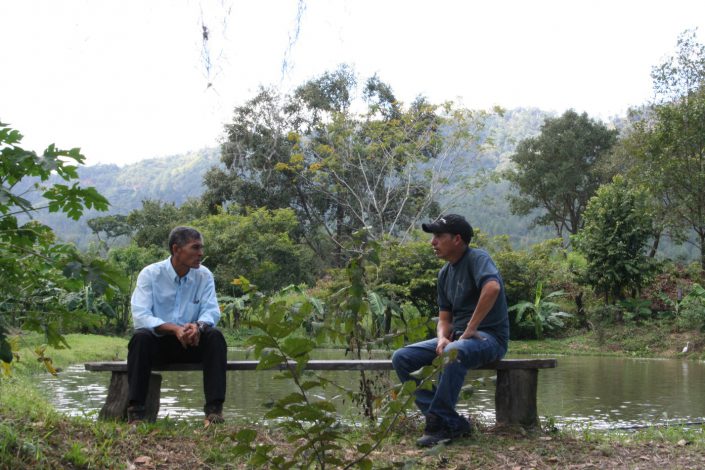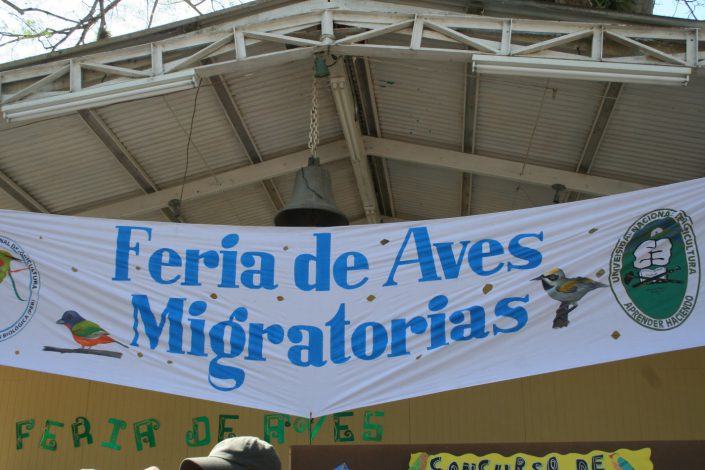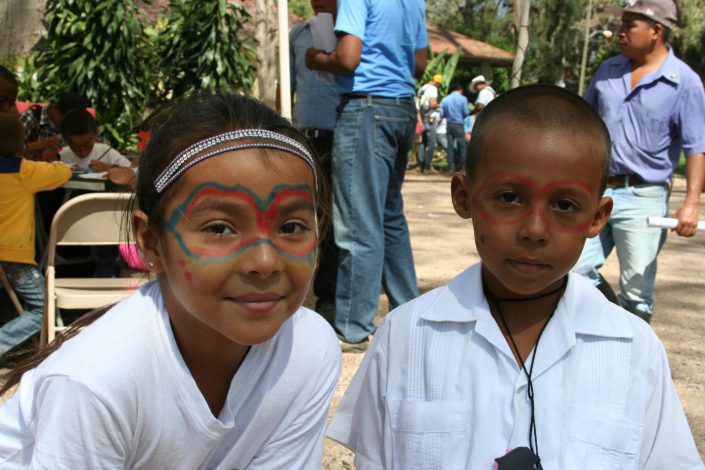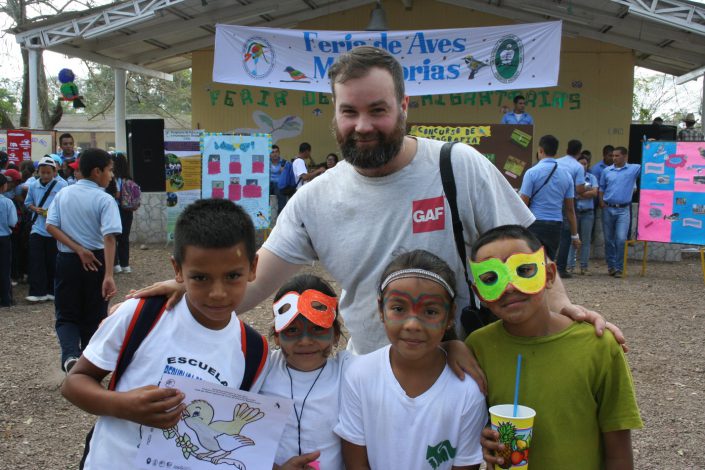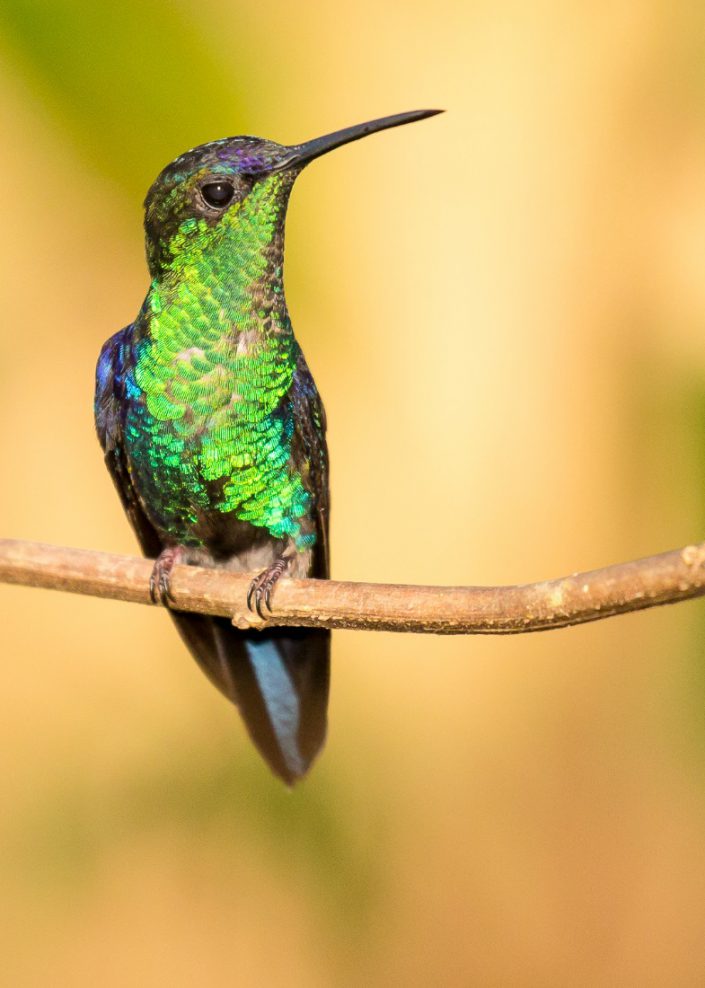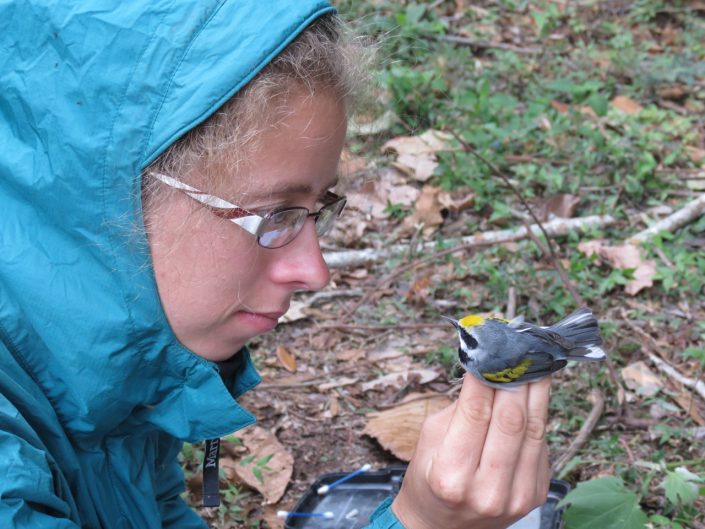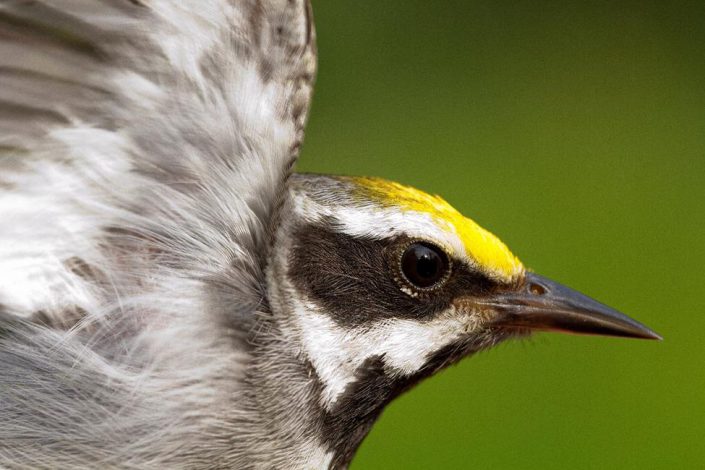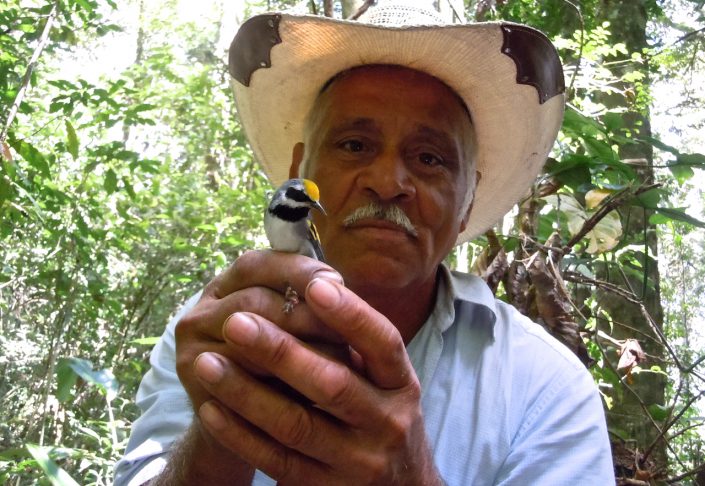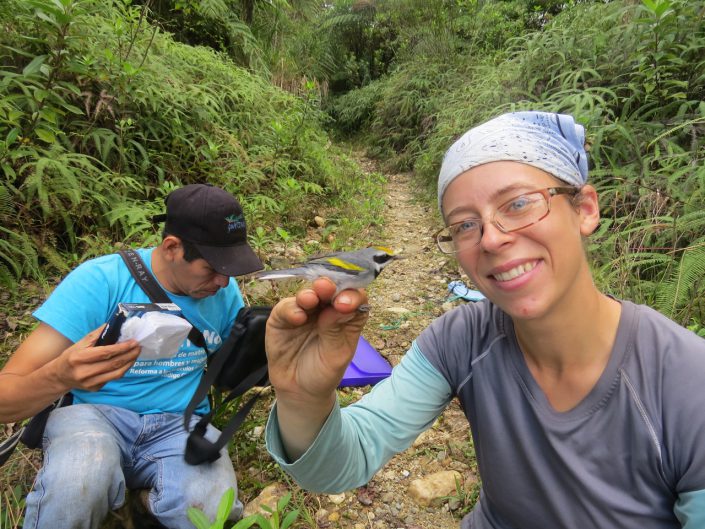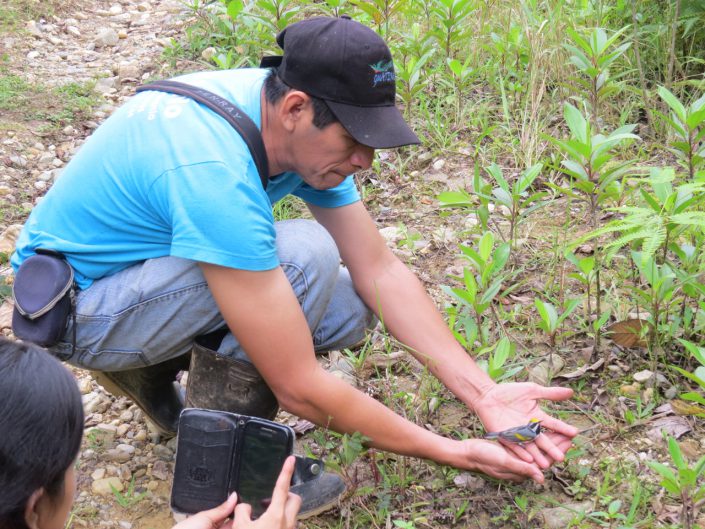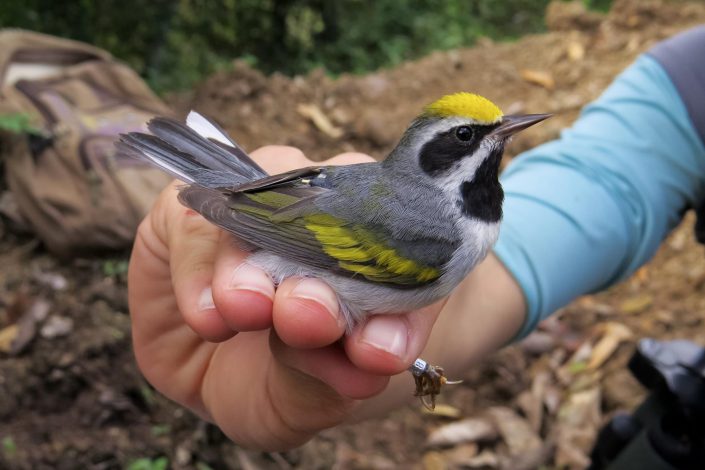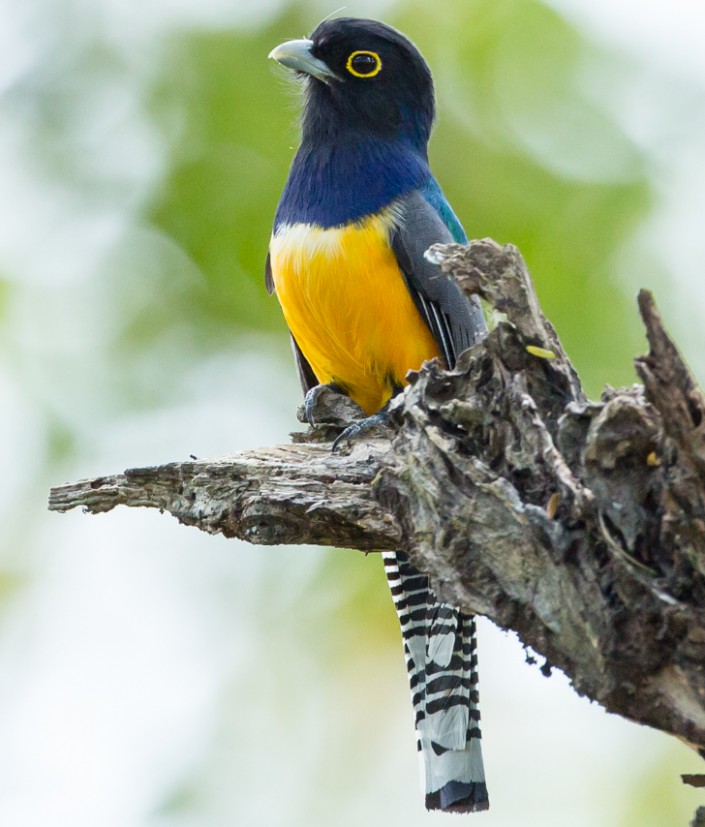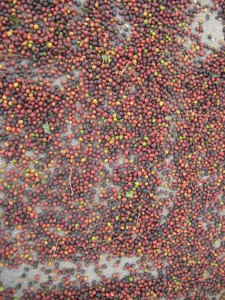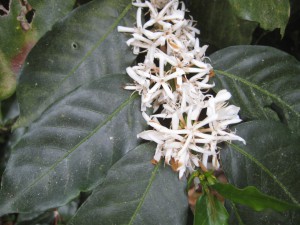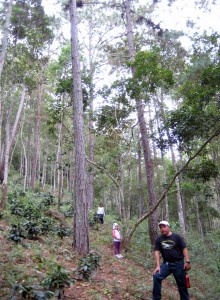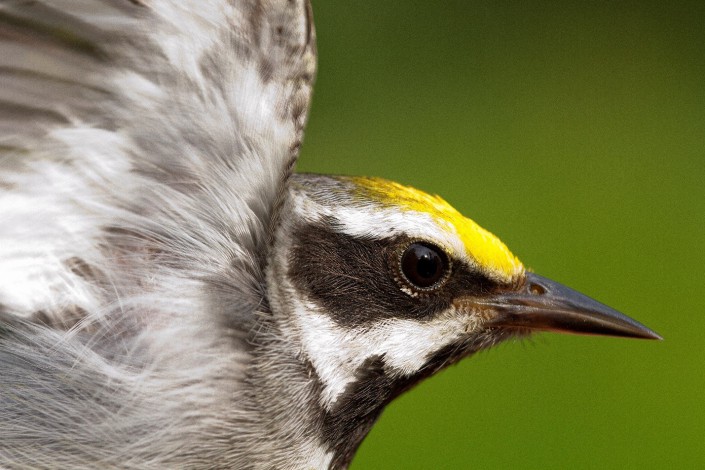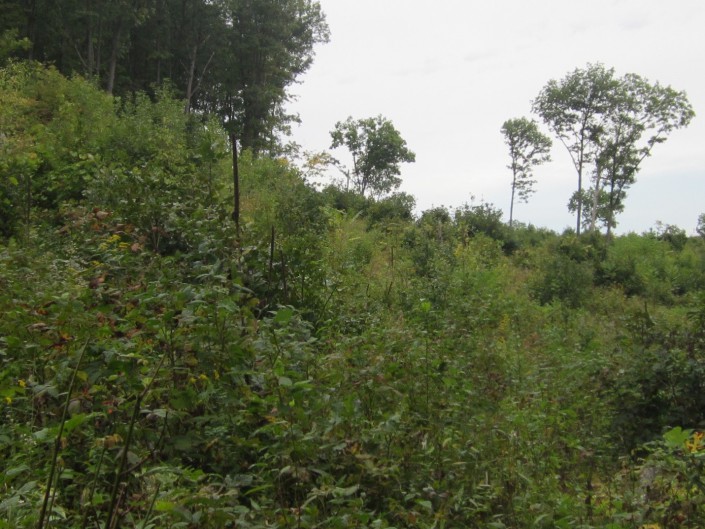Wildlife and Conservation in Honduras
A Traveling Biologist’s Favorite Honduran Wildlife Species
by Kelly Triece, Wildlife Biologist
As a final chapter to the Honduras blog series, I will be sharing with you some of my favorite wildlife experiences from the trip as a traveling biologist. The country of Honduras has a very diverse landscape including tropical forests, dry deserts, the Caribbean Sea and the Atlantic Ocean. Luckily, during our trip we were able to travel to all of these locations and that meant we were in a new location almost every night! Our accommodations varied from rustic to very rustic. Hot water was often in short supply, but hot meals and hot coffee were always on the menu and wildlife was plentiful. Honduras is a country of much scenic beauty and many local lodges and accommodations are beginning to attract tourists and travelers from across the world.

One lodge that we visited has over 100 hummingbird feeders! Hummingbirds travel from around the tropical forest to taste the sweet water and are welcomed by many eager photographers and nature lovers. Honduras has one endemic hummingbird, the Honduran emerald (Amazilia luciae), known only to a few special locations in the country. The Honduran emerald lives in dry scrub habitats of open, arid deciduous thorn forests. The species is declining due to loss of habitat from cattle grazing and development. However, local conservationists including the Honduran Corporation for Forestry Development (COHDEFOR) – a forestry agency, private landowners and non-profits are attempting to work with ranchers to preserve patches of thorn forest amongst pasture land. Through the integration and communication of conservationists and land users (ranchers), conservation has the potential to bring positive results for all end-users. If the Honduran emerald can survive on a mixture of scrub and pasture, then we may have a true success story.
While traveling through these various landscapes and working with the local Hondurans who are looking to bring community and wildlife together we were able to see some other great wildlife include leaf-nosed bats and boa constrictors! This boa constrictor (Boa constrictor) was found in a tree near a Neotropic cormorant (Phalacrocorax brasilianus) rookery. This boa likely feeds on the cormorants living nearby. Boas can reach up to 13 feet long and feed mostly on mammals and birds. Truly a sight to see!
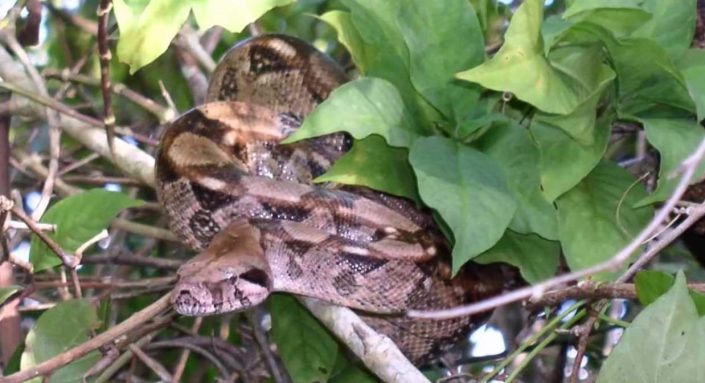
We also discovered Leaf-nosed bats, tucked in palm leaves in the pine forest. Leaf-nosed bats are found throughout central and south America. Leaf-nosed bats are among the most diverse family of bats in the world and vary in diet, ranging from insects to fruits. The bats pictured here are tent-making bats (Uroderma bilobatum) that make shelters out of palm leaves. These bats are frugivores, but may also eat insects, pollen and nectar. The bats make the tent shelters by biting the mid-section of the leaf to create a V-shape. After the lead dries up, a new shelter must be made. The palm leaves provide shelter from heavy rains, sun and wind. This adaptation allows bat to travel to new locations in search of ripe fruit and to escape predators.
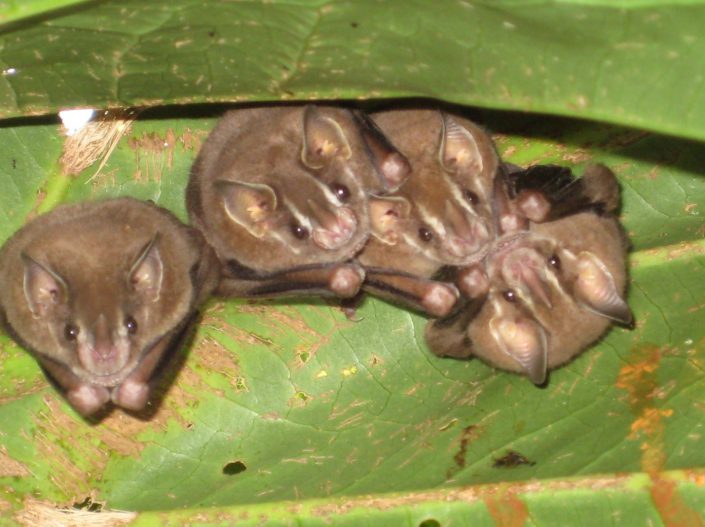
Throughout the trip our group had the opportunity to meet with many local leaders in conservation as well as golden-winged warbler researchers. It is clear that a multi-faceted approach to conservation is necessary in order allow for education, passion and protection to the many landscapes and wildlife of Honduras. It is through a partnership with educators, researchers, professionals, farmers, children and all locals alike that we can work to help promote the beauty of Honduras while preserving its beautiful landscapes and wildlife. These far-reach effects can be seen not just in Honduras, but in North America as well, as many of these species call both North and Central America home.
Learn More:
- Ecotourism and Education in Honduras
- Connecting the life cycle of the Golden-winged Warbler
- “Bird Friendly” Brew: Honduran Shade-Grown Coffee
- CWF Headed to Honduras to Study Golden-winged Warbler
Kelly Triece is a Wildlife Biologist for Conserve Wildlife Foundation of New Jersey.
